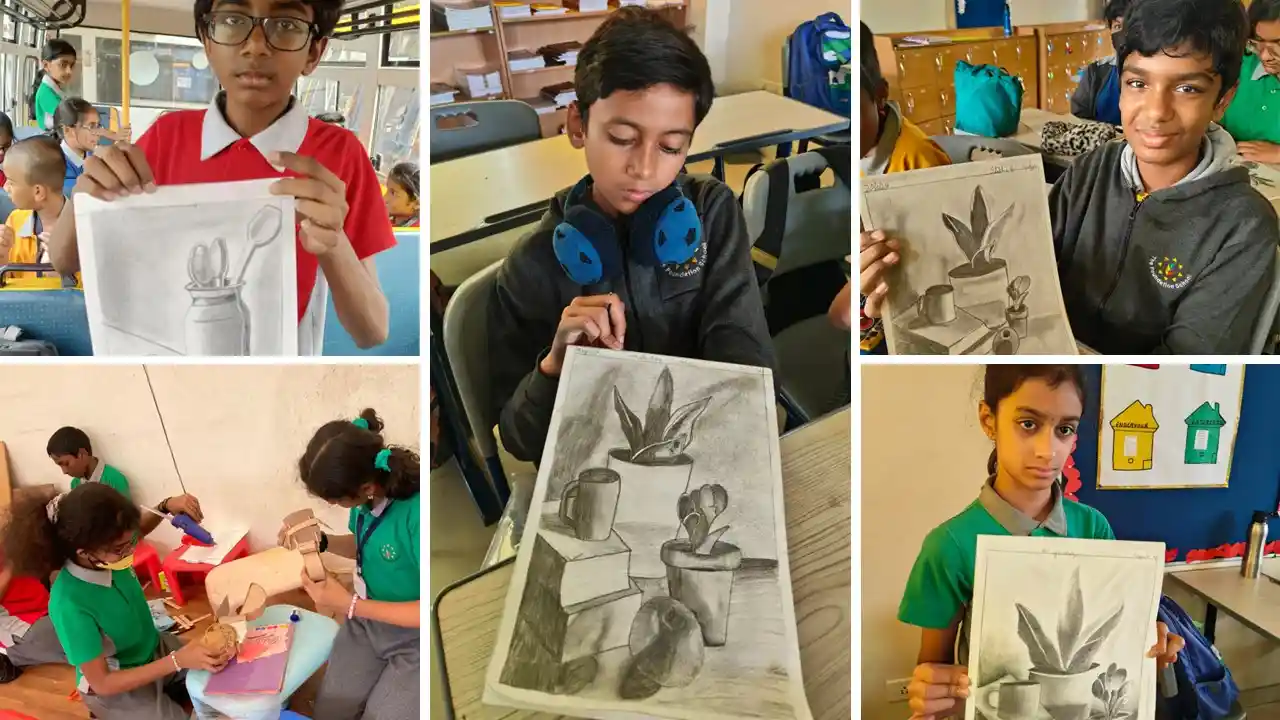Music, Art and Dance help children in a multitude of ways. According to research our brains are wired differently for each of these activities. For example, children who are unable to understand concepts through verbal means, can easily understand them when they sing it in the form of a song.
Activities such as painting and craft help children think and express themselves. Similarly, dance helps not only in abstract expression, but it also helps improve body-eye coordination and develops gross motor skills. The components of the Music, Art and Dance curriculum are:

India has a rich heritage of folk art from multiple parts of the country. These are relatively easy to understand and create. For example, children delight in replicating, or creating their own versions of Madhubani paintings.
VTS as it is known, helps children develop critical thinking and effective communication skills. It relies on developing a keen sense of observation, memory and expression.
If there is one form of art that is immensely satisfying, it is music. The ability to play an instrument, sing a song, or just listen and appreciate good music brings out our creative best. At the Foundation Schools in varthur, we encourage our students to learn various musical instruments such as keyboard, guitar, drums etc. They also learn Indian music including folk songs, notations (swaras) etc.
No art produced by a child is bad and even the best artwork will have scope for improvement and change. Children are at the Foundation School are encouraged to express themselves without fear of rejection.
Without Music, Art and Dance, a child would be unable to comprehensively express herself and her ideas. The future world requires meta skills, that require individuals to develop solutions that are not unidimensional.
For example, the answer to a social problem could be a combination of behavioural sciences, technology and economics. Music, Art and Dance help a child develop such creativity and the ability to express her solutions.